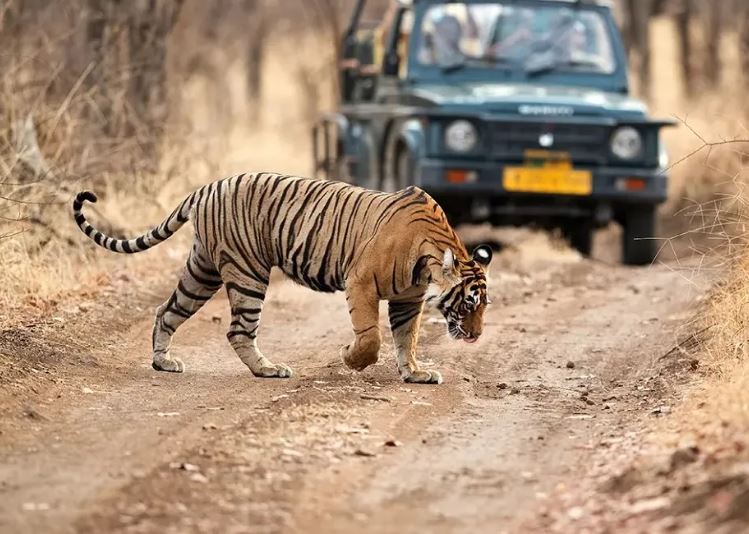Updated:- 05/Jan/2024 Ranthambore National Park, located in the heart of Rajasthan, India, is a haven for wildlife enthusiasts and nature lovers. Home to the majestic Bengal tiger and a diverse array of flora and fauna, the park offers a unique safari experience. However, understanding and navigating Ranthambore’s climate is crucial for maximizing your wildlife adventure. In this blog post, we provide expert advice on how to make the most of your visit, considering the park’s climate variations throughout the year.
Understanding Ranthambore’s Seasons:
Ranthambore experiences three distinct seasons – summer, monsoon, and winter. Each season brings its own set of challenges and opportunities for wildlife enthusiasts. Summer, from April to June, is the best time for tiger sightings as the animals gather around water sources. Monsoon, from July to September, transforms the landscape into a lush green paradise but can hinder visibility during safaris. Winter, from October to March, offers pleasant weather with a higher chance of spotting a variety of wildlife. To plan your visit effectively, consider the unique characteristics of each season.
Summer Safari Tips:
While summer in Ranthambore can be scorching, it is also the prime time for tiger sightings. To beat the heat, opt for early morning or late afternoon safaris when the temperature is more bearable. Wear lightweight, breathable clothing, and stay hydrated throughout the safari. Focus on water bodies, as wildlife, including tigers, often congregate near them. Be patient and observant, as the sparse vegetation during this season increases the chances of spotting elusive creatures.
Monsoon Adventures:
Monsoon brings a different charm to Ranthambore, with the landscape undergoing a vibrant transformation. However, the increased vegetation can make spotting wildlife challenging. During this season, prioritize zones with open areas to enhance visibility. Pack waterproof gear and be prepared for sudden showers. While tiger sightings may be less frequent, the park’s beauty during the monsoon makes it a unique and rewarding experience for nature lovers and photographers.
Winter Wonderland:
Winter is considered the best time to visit Ranthambore, with pleasant weather and a higher probability of spotting a variety of wildlife. The dry deciduous forests make it easier to observe animals, and the cool temperatures are comfortable for extended safaris. Dress in layers to accommodate the temperature variations between morning and afternoon. Explore different zones to witness the diverse fauna that calls Ranthambore home during the winter months.
Essential Packing List:
Regardless of the season, certain items are essential for a comfortable and successful safari in Ranthambore. Pack sunscreen, a wide-brimmed hat, insect repellent, sturdy walking shoes, and a good pair of binoculars. Consider a light jacket for early morning safaris during the winter months. A camera with a telephoto lens is crucial for capturing wildlife moments, while a reusable water bottle will help you stay hydrated in the park’s varying climates.
Conclusion:
Ranthambore’s climate plays a pivotal role in shaping the safari experience, offering different perspectives of the park’s vibrant ecosystem throughout the year. By understanding the nuances of each season and following expert advice, you can maximize your chances of memorable wildlife encounters. Whether you visit during the heat of summer, the lush monsoon, or the crisp winter, Ranthambore promises an unforgettable adventure for those who appreciate the beauty of nature and the thrill of spotting majestic wildlife in their natural habitat. For Booking Ranthambore Jeep Safari call us and enjoy your jeep safari tour.
